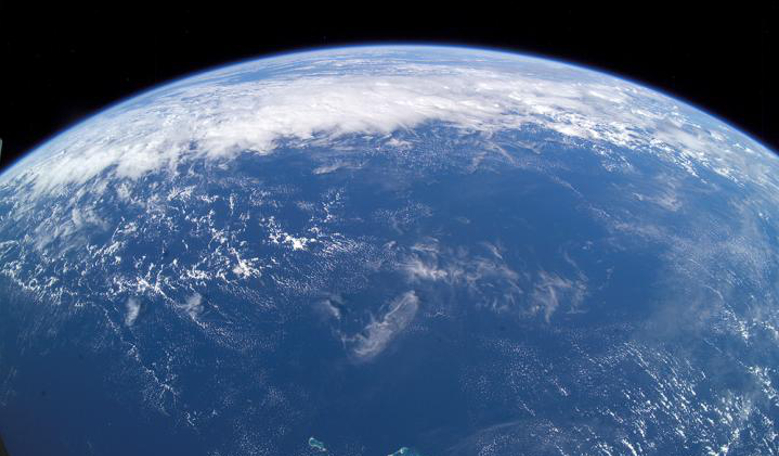We call our planet Earth, and yet it is one of the most water-logged bodies in our Solar System. But where did it all come from? It has long been assumed that the molecule which sustains life as we know it, collected in substantial volumes to make our oceans after countless asteroids rained down on Earth’s surface eons ago. However, new research suggests that this might not be case after all and that some of the ingredients for water arrived a lot earlier than the asteroids did; a suggestion that bodes well for other large rocky exoplanets scattered throughout the galaxy.
The theory that all of Earth's water comes from asteroids stems from the fact that chemically speaking, ocean water and water found on asteroids are very similar.
Water is made from two hydrogen atoms and one oxygen atom (H2O) but not all hydrogen atoms are the same. One type is ‘heavier,’ as along with the standard electron and proton that a normal hydrogen atom contains, it packs in an extra neutron in its nucleus. This heavy hydrogen is called deuterium and scientists distinguish one body of water from another by measuring something called the deuterium-to-hydrogen ratio I.e how much deuterium there is compared with hydrogen.
Oceans originating from comets smashing into Earth was recently ruled out as a leading source of the wet stuff, after research showed that Kuiper Belt comets can contain three times the amount of heavy water compared to what Earth has. So if objects like Comet 67P/C-G has frequently struck Earth in its early history, then our deuterium-to-hydrogen ratio would be significantly higher than it is today.
So if it didn’t all come from asteroids, how did it get here? By looking at samples of hydrogen from deep inside the Earth, scientists have seen that there is notably less deuterium close to the boundary between the core and mantle when compared with the oceans; so in other words, the hydrogen in our oceans does not represent hydrogen throughout the entire planet.
This could be explained if, when the Earth was a small ball of rubble cobbled together by bits of rock sticking together – a stage known as a planetary embryo – eventually grew large enough so that when it collided with another object of substantial size, the collision produced enough energy to melt the surface and create an ocean of magma.
Gases from the solar nebula, the disk of gas and dust from which our Solar System sprang, including hydrogen and noble gases, were drawn in by the large, magma-covered embryo to form an early atmosphere. Hydrogen direct from the nebula, which contains less deuterium and is lighter than asteroidal hydrogen, dissolved into the molten iron of the magma ocean.
This hydrogen, through a process called isotopic fractionation, was then pulled inwards towards the young core by its attraction to iron; which being quite a heavy element sunk into the centre of our planet. Deuterium meanwhile remained in the magma to eventually cool and became the mantle. Impacts from smaller embryos and other objects then continued to add water and overall mass until Earth reached its final size.
Its not just hydrogen that this happened too either. The noble gases helium and neon have also been found in the Earth's mantle with isotopic signatures that match those from the solar nebula.
"We calculated how much hydrogen dissolved in these bodies' mantles could have ended up in their cores," says Steven Desch, professor of astrophysics in SESE and one of the team scientists. "Then we compared this to recent measurements of the D/H ratio in samples from Earth's deep mantle." This let the team set limits on how much hydrogen is in Earth's core and mantle.
"The end result," says Desch, "is that Earth likely formed with seven or eight global oceans' worth of hydrogen. The majority of this indeed came from asteroidal sources. But a few tenths of an ocean's worth of hydrogen came from the solar nebula gas."
And maybe there are other objects that contributed to our oceans alludes Desch, as water is hydrogen plus oxygen, and oxygen is abundant, any source of hydrogen could have served as the origin of Earth's water.
Although we have only scratched the surface in our hunt for Earth-like worlds in other exo-systems, many of the 3,800 planets we’ve found so far appear to be rocky bodies not significantly different from our own.
If this is indeed how Earth became a water-world, they too could have collected hydrogen gas from their own stars' solar nebulas in the way our planet did. "This model suggests that the inevitable formation of water would likely occur on any sufficiently large rocky exoplanets in extrasolar systems," said Jun Wu, assistant research professor at Arizona State University and lead author of the study. "I think this is very exciting."











